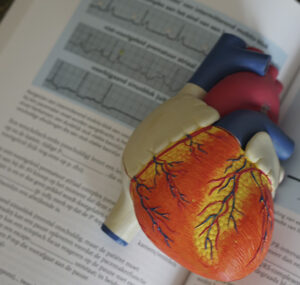In a healthcare setting, patient positioning is a critical aspect of the nursing practice. It involves maintaining a patient’s good body alignment by constantly changing their position in a systematic way.
It is the responsibility of nurses to ensure that the patients are positioned properly. Principles of patient positioning in nursing should be taken seriously by all nursing professionals. These principles are important for many reasons including airway management, ventilation, controlling unnecessary exposure, and most importantly physiological safety.
In this blog, we will understand more about patient positioning, its importance, and the different patient positions that are used in healthcare settings.
What is Patient Positioning?
Patient positioning is a practice that involves maintaining a patient’s body in a neutral alignment by preventing hypertension and extreme lateral rotation so that immobility and injury can be prevented.
Learning the rules for patient positioning in nursing is an important practice and a responsibility of the Registered Nurse. In surgery, things such as specimen collection and proper patient positioning offer optimal exposure to the surgical site and maintenance of the patient’s dignity by controlling any unnecessary exposure.
Patient positioning is important for ensuring patient safety not just during a surgical procedure but also before and after. Optimal positioning is not just for ensuring the best possible access to a surgical site but also prevents long-term problems such as nerve damage or pressure ulcers.
In most healthcare settings, patient positioning offers airway management and ventilation while maintaining body alignment and providing physiological safety. The patient positioning must be done to avoid any complications so that better outcomes can be attained after the surgical procedures.
Goals of Patient Positioning:
It is important to note that patient positioning in nursing is important for a safe and effective surgical procedure. Proper patient positioning in the operating room depends largely on the type and length of procedure, anesthesia access to patients, the medical devices required, and other factors.
Safe positioning of a patient is a team effort but often, nurses are responsible for ensuring that it is carried out well. While the surgical procedure is going on, all members of the team play an important role in making sure that the correct position of a patient is maintained.
The most important goal of patient positioning in nursing is to safeguard the patient from any injuries and physiological complications of immobility. To be specific, the primary goals of patient positioning are mentioned below:
- Comfort and Safety: Patient positioning in nursing helps in supporting the patient’s airway and maintaining circulation all through the procedure. The impaired venous returning to the heart and ventilation to perfusion mismatch are relatively common complications that arise. Proper positioning promotes comfort and prevents nerve damage by preventing any unnecessary extension.
- Dignity and Privacy: In surgery, optimal patient positioning in nursing is an excellent way to respect the patient’s dignity by reducing the exposure of the patient who is feeling vulnerable.
- Visibility and Success: Suitable patient positioning in nursing allows ease of surgical access as well as anaesthetic administration during the perioperative phase.
All in all, the below-mentioned things must be ensured when it comes to patient positioning in nursing.
- Maintaining the patient’s airway and circulation all through the procedure.
- Preventing nerve damage.
- Allowing access to the surgical site as well as for anaesthetic administration.
- Offering comfort and safety to the patients.
- Preventing any soft tissue or musculoskeletal patient injury.
5 Common Patient Positions:
Fowler’s Position:
Also known as the sitting position, the Fowler’s position is one of the patient positioning in nursing that is used for neurosurgery and shoulder surgeries. While positioning a patient in Fowler’s position, the surgical staff is supposed to minimize the degree of the patient’s head elevation as much as possible while maintaining the head in a neutral position.
This is a patient position in which the head and trunk are raised 40 to 90 degrees. In the low Fowler’s position, the head and trunk are raised to 15 to 45 degrees. In the high Fowler’s position, again head and trunk are raised to 90 degrees.
The Fowler position is recommended for patients suffering from respiratory, cardiac, or neurological problems. In these positions, the patient’s feet are kept in alignment with a footboard. It is important to remember that in this position, the patient’s arms should be fixed and secured across the body, the buttocks should be padded, and the knees flexed to about 30 degrees.
2.Orthopneic or Tripod Position: This is a position in which the patient is placed either in a sitting position or on the side of the bed with an over-bed table placed in front to lean on. Several pillows are also placed on the table to rest on.
Patients who are suffering from breathing problems are placed in the tripod position as it allows expansion of the chest and makes breathing easier. Patients who have difficulty in breathing are often placed in this position because it allows maximum expansion of the chest.
It must be remembered that the orthopneic position is helpful for patients who have problems exhaling because they can press the lower part of the chest against the edge of an overbed table.
3. Supine or Dorsal Position: Another common position to learn while understanding patient positioning in nursing is the Supine or Dorsal position. Also known as Dorsal Decubitus, this position is used frequently for procedures. This is a reclining position in which the face of the patient is mostly upwards.
In this position, the arms of a patient should be tucked at the patient’s sides with a bedsheet secured with arm guards to sleds. The arms must be flexed and secured across the body or extended and secured on the padded armboards.
Patients who have undergone any type of surgery are generally placed in this position. It helps them recover while giving them comfort. This position creates extra pressure on the skin and bony prominences over the elbows, sacrum, occiput, scapulae, coccyx, and heels.
The supine position is frequently used in procedures involving the anterior surface of the body including an abdominal area, cardiac, and thoracic area too. A small pillow or a donut should be used for stabilizing the head as the extreme rotation of the head during surgery can lead to occlusion of the vertebral artery.
4. Prone Position: In the prone position, the patient lies on their abdomen with their head turned to one side. This position allows the hips to flex while also allowing for full extension of the knee joints.
This position is for patients who are either unconscious or who have undergone surgery on the mouth or throat. A pillow under the head, along with a towel roll under the abdomen, is placed to provide support to a patient lying in the prone position.
The prone position is often used for spine and neck surgeries, vascular surgeries, neurosurgery, tendon repairs, colorectal surgeries, etc. The foam and gel positioners may also be used for spinal procedures.
When the patient is in a prone position, the pressure is kept off the eyes, ears, cheeks, and breasts. At any given time, four members of the surgical staff must be available when turning a patient prone. Common risks associated with the prone position include increased abdominal pressure, bleeding, nerve injuries, cardiovascular compromise, ocular injuries, etc.
5. Lateral Position: Yet another important patient positioning in nursing to learn about is called the lateral position. It is also referred to as a side-lying position, which is when the patient lies on one side of the body. In this position, the top leg is placed in front of the bottom leg and hip, knees are flexed.
In this position, most of the bodyweight is distributed to the lateral aspect of the lower scapula and the greater trochanter of the femur. The lateral position helps relieve pressure on the sacrum and heels and is a much-needed relief for people who sit for most of the day.
A patient might be positioned laterally during back, colorectal, kidney, and hip surgeries. It is also commonly used during thoracic and ENT surgeries, and neurosurgery. The patient’s physiological spinal and neck alignment should be maintained during the procedure and a safety restraint should be secured across the patient’s hips.
Some risks to a patient in a lateral position include pressure to points on the dependent side of the body such as ears, ribs, hips, knees, and ankles as well as brachial plexus injury, diminished lung capacity, venous pooling, and DVT.
Conclusion:
Patient positioning is an important aspect of patient care services and an extremely important part of a nurse’s job as well. That’s why, to be truly effective, nurses must know all about the different patient positions.






